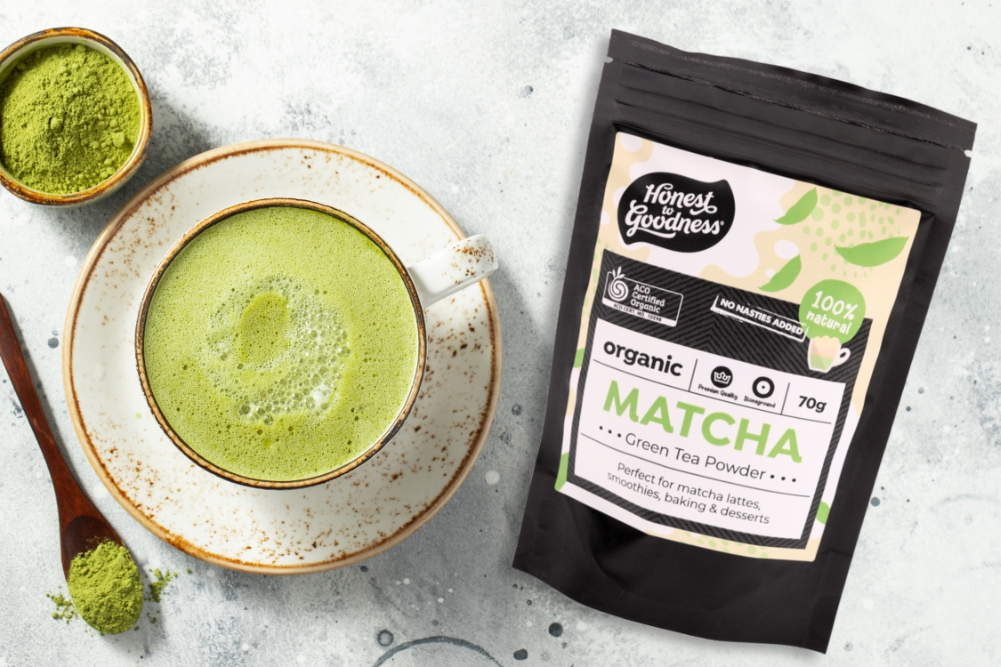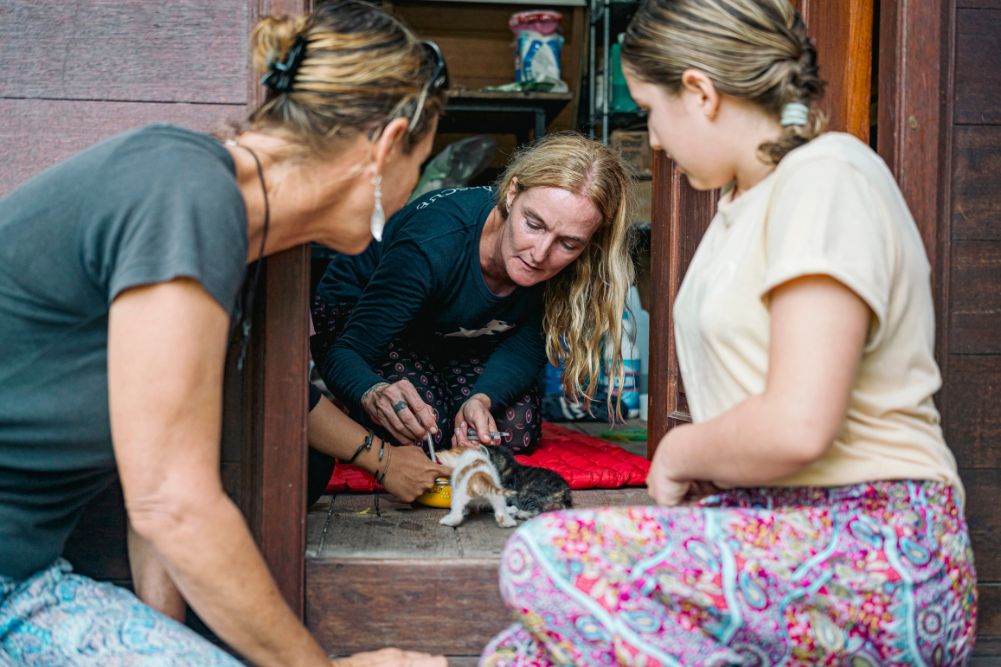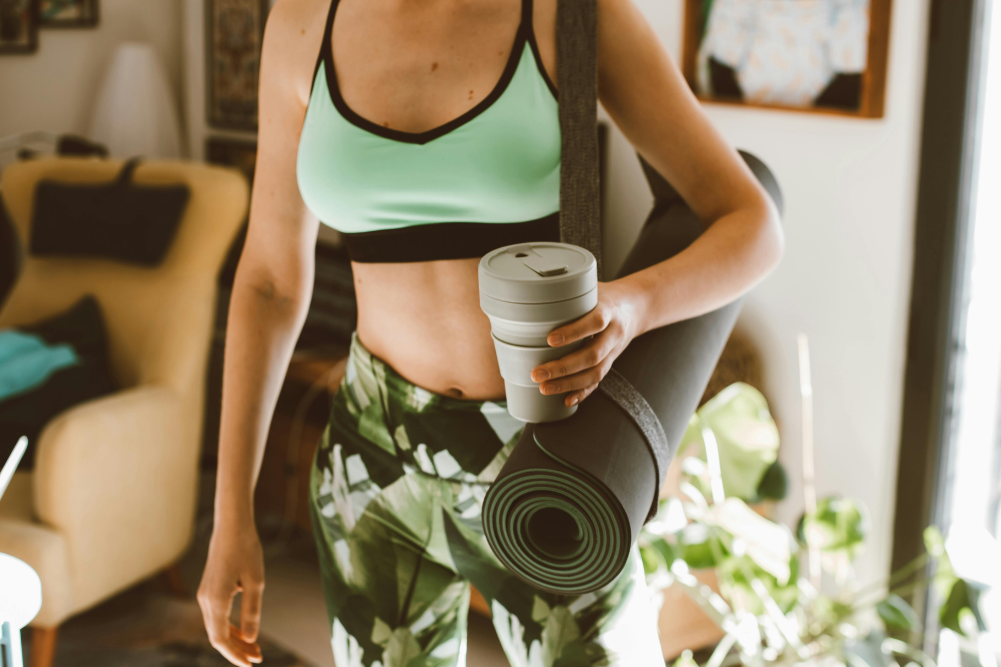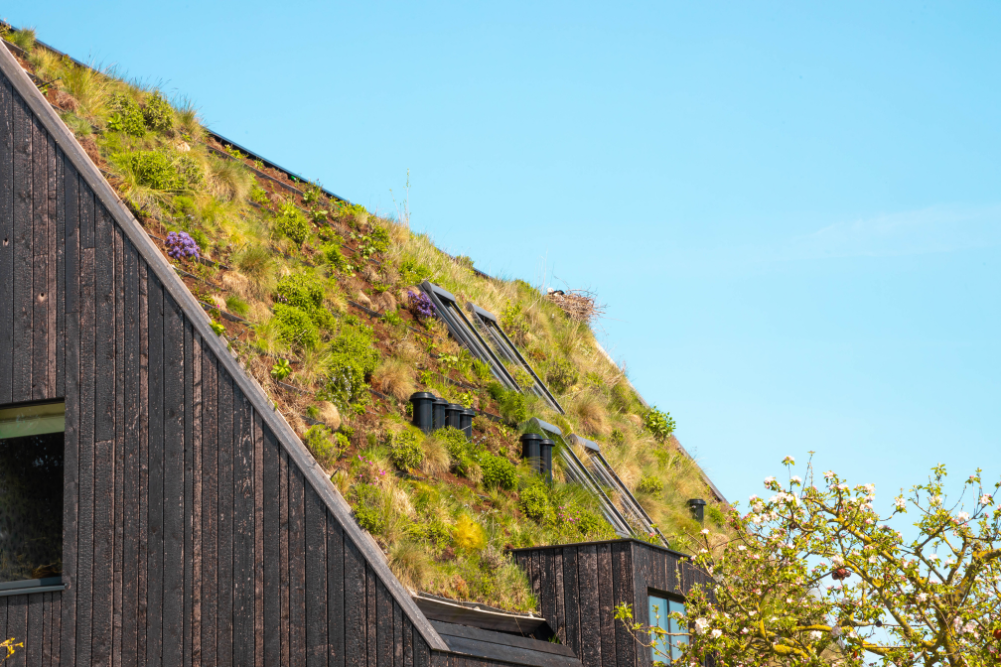Eco-Friendly Alternatives to Plastic
Plastic has become an essential part of life as we know it. But with sustainability at the forefront of everyone’s mind, many of us have realised that life in plastic isn’t so fantastic and are turning to eco-friendly alternatives that won’t cost the earth.
There are currently 150 million tonnes of plastic floating on our seas. Each minute, the equivalent of a garbage truck load of plastic is dumped into the ocean. Great Pacific Garbage Patch (GPGP), the largest of fi ve major garbage patches in our oceans, contains the equivalent weight of 500 jumbo jets-worth of plastic.
And despite the growing awareness, local initiatives, and activism around plastic waste and the environment, the average Australian still uses 130kg of plastic per year. Given the current rate of plastic consumption worldwide, plastic is expected to account for fi ve to 10 per cent of greenhouse gas emissions by 2050.
However, there is a new focus on innovative eco-friendly alternatives to the plastics we’ve become reliant upon in modern society. From compostable cling film to pasta straws and edible seaweed packaging, the future of plastic is looking more sustainable than ever.
A single-use society
Plastics are manufactured using fossil fuels such as natural gas, oil
or plants and refined into ethane and propane. These compounds are then treated and become ethylene and propylene, then combined to create a range of polymers (or plastics).
The first synthetic polymer was invented in 1869, but the real plastic boom didn’t happen until the invention of polyethylene terephthalate (PET) bottles in the 1970s. PET plastic was first discovered in the ’40s and, after the invention of the PET bottle,
became the go-to for safe, reliable and cheap food and drink storage.
During this time, bottled water was marketed as essential for good hair, skin and health, and touted to be much safer and better than soft drinks and even tap water. Evian water bottles became a staple accessory on fashion runways and quickly spread to the masses. Once major brands such as Coca-Cola and Pepsi jumped on the bottled water bandwagon, there was no turning back. Today, an estimated one million plastic drinking bottles are purchased every minute worldwide.
Let’s face it — plastic bottles and food containers are super-convenient. But the cost of convenience is seen in the form of
pollution and its effects on the environment. A PET bottle takes more than 450 years to break down, and even then it leaches potentially toxic and harmful substances into the soil and waterways. Bottled water also takes almost 2000 times more energy to produce than tap water, and there are the health effects. Multiple studies have suggested that the various chemicals in PET and other plastics used to house food and drinks act as endocrine disruptors and interfere with the body’s hormonal system.
A 2019 report titled Plastic & Health: The Hidden Costs of a Plastic Planet found that “roughly two-thirds of all plastic ever produced has been released into the environment and remains there in some form — as debris in the oceans, as micro- or nanoparticles in air and agricultural soils, as microfibres in water supplies, or as microparticles in the human body.” And given that modern plastics
such as PET are only a few decades old, we are yet to discover the full effects it may have on our health and wellbeing.
Although plastic bottles were first introduced as recyclable, statistics show that only 36 per cent actually get recycled. It seems that Norway is one of the only countries in the world to implement a highly successful recycling scheme, with a 97 per cent recycling rate on plastic bottles. Of this, 92 per cent is reused again in new bottles, up to 50 times. Given that an estimated 91 per cent of plastic produced globally doesn’t get recycled, there are many Western countries that could learn a thing or two from the zero-waste powerhouse.
Bottled beauty
Another of the biggest offenders when it comes to single-use plastic is the beauty industry, which produces an estimated 120 billion units of plastic packaging each year. Aside from packaging, personal health tools that contain microplastics and plastic fi lms, including toothbrushes, cotton buds, wet wipes and disposable make-up rounds, are among the most environmentally damaging elements of beauty waste. A London-based river clean-up team recently discovered that the thousands of wipes fl ushed down the toilet had created a layer atop the river bed of the Thames — an increasingly common phenomenon in rivers around the world.
But, like community and national initiatives to reduce plastic waste from everyday items, the beauty industry is beginning to make a change for the better and find alternative packaging options.
Looking to reduce the carbon footprint in the dairy industry,
Nicole Gilliver, owner of Grandvewe Cheeses and executive director at Ewenique Enterprises, recently launched a minimalist beauty brand that repurposes sheep’s milk that isn’t used for the cheese.
“Ewe Care was inspired by a desire to minimise waste and to test the boundaries of consumer perceptions of what constitutes ethics and sustainability in the beauty space,” Gilliver explains. “We set out to create one of the most functional, beautiful, innovative and environmentally conscious beauty products we could conceive, and thus Ewe Care was born.”
Your guide to disposing of plastics
A plastic-free lifestyle can be super-challenging and, for some,
simply impractical. So even those who strive to reduce their
plastic use may inevitably end up with some plastic in the
house. Here’s how to dispose of it responsibly and in the most
sustainable way possible.
Kerbside recycling
The yellow bin is for hard plastics, cardboard, paper, glass and
aluminium cans. Anything with oil or leftover food (especially
pizza boxes) cannot be recycled. Don’t forget to empty and
thoroughly rinse out your food containers and milk cartons
to avoid recycling contamination!
REDcycling
Soft plastics such as food wrappers, clingwrap, pet food bags
and squeeze pouches belong in REDcycle bins, which can be
found in most supermarkets. The plastics are then taken to
REDcycle’s Australian-based recycling and manufacturing
partners where they are made into shopping trolleys, fence
posts and even road base. For a detailed list of what to
REDcycle, head to redcycle.net.au/what-to-redcycle
Terracycle
This is for hard-to-recycle materials including empty
beauty packaging, blister packs, toothbrushes, coffee pods,
stationery and even PPE. You can recycle for free at select
stores, buy a Terracycle box for your home or create a local
Community Collection Hub. At Terracycle facilities, products
are sorted, sterilised and melted down, then remoulded into
recycled plastic products. To find out what and where you can
Terracycle, head to terracycle.com/en-AU/collection-programs
Rather than opting for low-cost, high-waste plastic packaging, the bespoke range of day and night cream comes in home-compostable sachets which are emptied into handmade ceramic vessels that double as art.
“The choice to go plastic-free was born of a desire to really challenge the industry to think long and hard about the prolific volume of plastics used in beauty. While we understand that many companies are using recycled or recyclable plastics or glass, this fails to consider the fact that as a society our recycling practices and the recycling infrastructure itself is an issue,” Gilliver explains. So what about upcycled plastic packaging? Well, as Gilliver notes, there is still a large amount of virgin plastic used in the creation process, which is adding to the plastic problem we are facing rather than providing an answer.
Ewe Care’s answer was raku ceramics handmade by Tasmanian
artist Ian Clare. The spherical vessels are a seriously luxurious
alternative to plastics, but also add to the entire experience of
skincare, which, for many, has become a mindful time to relax,
unwind and simply focus on the task at hand.
Sitting pretty on a vanity or bedside table, the vessels offer a striking conversation piece. Each one is finished with a marble pattern that resembles sheep’s wool and is completely one of a kind.
“The other major consideration for opting for handmade raku ceramics is simply to force a conversation around thinking about how we use packaging in this space and beyond,” she says. “Slow down. Immerse yourself in the ritual of self-care. Buy it once. Refill it. Place it in your bathroom knowing that it’s totally unique.”
It seems that many small businesses across every industry are making real, progressive change to limit or completely forgo plastic. But, somewhat unsurprisingly, many big corporations and global brands seem to be turning a blind eye. According to the Plastic Waste Makers Index, 90 per cent of all single-use plastic generated globally comes from 100 companies, and 55 per cent of all single-use plastic is generated by just 20 companies. Unsurprisingly, at the top of the list are oil giants including
ExxonMobil, Sinopec and Saudi Aramco, as well as Dow, the world’s largest chemical company — which is ironic given that their description states they are committed to “sustainable solutions for customers in packaging, infrastructure and consumer care”.
And while these corporations should be leading the way to a more sustainable future, it is the independent ones who are calling for the most change. Ewe Care is among them: “We are a business fundamentally built on the value of sustainability,” says Gilliver. “We believe that it’s the responsibility of every business owner to give serious consideration to all elements of sustainability in what they do. Not just nod in the direction, but really stand behind it. It’s not an easy route … We aim to be a successful example of industry leadership in this area.”
Sustainable plastic alternatives
When it comes to plant-based bioplastics, it’s important to be aware that only 20 per cent of the ingredients used to make the packaging needs to be from renewable, organic materials for the product to be “plant-based”, meaning that up to 80 per cent of the product is made from fossil fuels.
So now you know a little more about plastic and its effects on the environment (and your health), you’re probably wondering, What can I use instead? There are plenty of completely eco-friendly, compostable and 100 per cent biodegradable alternatives out there, and plenty more to come.
Seaweed
One of the most efficient swaps for plastic, seaweed bioplastics offer an edible and completely compostable eco-alternative. They are tasteless and odourless and can be used as a substitute for almost any plastic wrapping, including food sachets, soap packaging and even water.
Nopla, a UK-based sustainable packaging start-up, has developed a variety of 100 per cent biodegradable and compostable alternatives including food-grade sachets, plastic-free food containers, dissolvable film and seaweed paper packaging. Their hero product, Ooho, is an innovative replacement for single-use liquid packaging. It can be either eaten or composted, and has a bubble-like appearance to house your beverage of choice. With plastic-free living on the rise, the seaweed-based packaging market is set to grow 16 per cent between 2020 and 2027.
Cornstarch
Cornstarch plastic is one of the most common alternatives to traditional plastic — it looks and acts the same, but instead of petroleum-based polymers, it is made up from cornstarch polymers. Most FOGO bin (the kerbside compost service) liners are made from cornstarch, but it is important to do your research as some brands are contaminated with petroleum plastic and aren’t fully biodegradable.
Brands such as Compost-A-Pak are completely plastic-free and Australian certified as compostable for both home and industrial composting. These film bags are also printed with soy-based ink, so no harmful toxins are leached into the ground as the bags biodegrade.
Mushrooms
From packaging to vegan leather, mushrooms really are wonder plants when it comes to sustainability. New York-based sustainable materials company Ecovative Design has pioneered a whole range of mushroom-based products using mycelium, the vegetative part of fungi (the equivalent of plant roots). Ecovative offers two main mycelium technologies: MycoComposite, which produces biodegradable mushroom packaging and eco-friendly building materials (think foam and insulation); and AirMycelium, which provides sustainable alternatives to leather and plastics.
Just when you thought mushrooms couldn’t get any more magical, a Utrecht University study has identified more than 50 mushroom species that fully degrade plastic. More studies are being done around the world to discover the extent of mushrooms’ ability to eat plastic, so watch this space.
Barley and wheat
Barley and wheat waste offer the perfect alternative to waste that often ends up in the ocean, including cups, straws and six-pack holders. Saltwater Brewery, a microbrewery in Florida, teamed up in 2016 with agency We Believers to create beer packaging rings made from the waste of the beer-making process. The packaging disintegrates within two hours of being in the water and is completely edible, so marine wildlife won’t get stuck or ingest any microplastics (although it is important to note that barley is not a natural part of the marine diet).
From straws to children’s toys, it seems that barley and wheat plastic substitutes are on the rise, although the added production costs may limit the customer base. But as Marco Vega, co-founder of We Believers, told The Guardian: “If most craft brewers and big beer companies implement this technology, the manufacturing cost will drop and be very competitive.”
Hemp
Glowing skin, healthy gut, calmer mind, sustainable fashion — what else could you ask for from a single plant? Well, turns out hemp also makes a decent plastic alternative. The plant contains around 60 to 70 per cent cellulose, so contains similar properties to conventional plastic. Hemp is also relatively low-cost, is easily harvested and requires less energy to be made into fibres. While there are limited options for 100 per cent hemp bioplastic, a few companies are leading the way to a greener, hemp-based solution.
Green Spring Technologies has made its mark in the hemp industry with 100 per cent plant-based hemp plastic pens and guitar picks. A few cutting-edge labs such as PFDesignLab and Onyx Composites have created 3D-printed hemp bicycles. With the mission to prove that natural fi bres offer a durable and sustainable alternative for synthetic fi bres such as glass or carbon, the Onyx Composites model was tried and tested by its creator, German engineer Nicholas Meyer, in a few triathlons.
The cost of sustainable alternatives may be higher initially, but
whether you’re investing in a reusable drink bottle, recyclable coffee cup, beeswax wraps or plastic-free beauty products, the long-term cost to your wallet and the environment is hugely minimised.
For those of us who are just stepping into the world of plastic-free living, it may seem like a daunting task. But, as Gilliver says, it doesn’t have to be: “Any measure of waste reduction is a step in the right direction. Ask questions. Don’t accept that a label will always be the truth. Be curious. But above all — start.”
11 simple swaps for everyday plastic
- Toothbrush > bamboo toothbrush
- Cling film > beeswax wraps
- Plastic pet waste bags > compostable green pet waste bags
- Plastic straws > metal, bamboo or pasta straws
- Disposable razor > metal safety razor
- Coffee pods > home-compostable coffee pods
- Plastic takeaway packaging > BYO containers
- Dish sponges > natural sponges and cloths
- Shampoo, conditioner and soap > beauty bars
- Plastic-wrapped toilet paper > eco-friendly toilet paper delivery
- Choose packaging that is made from recycled plastic and is BPA-free.








